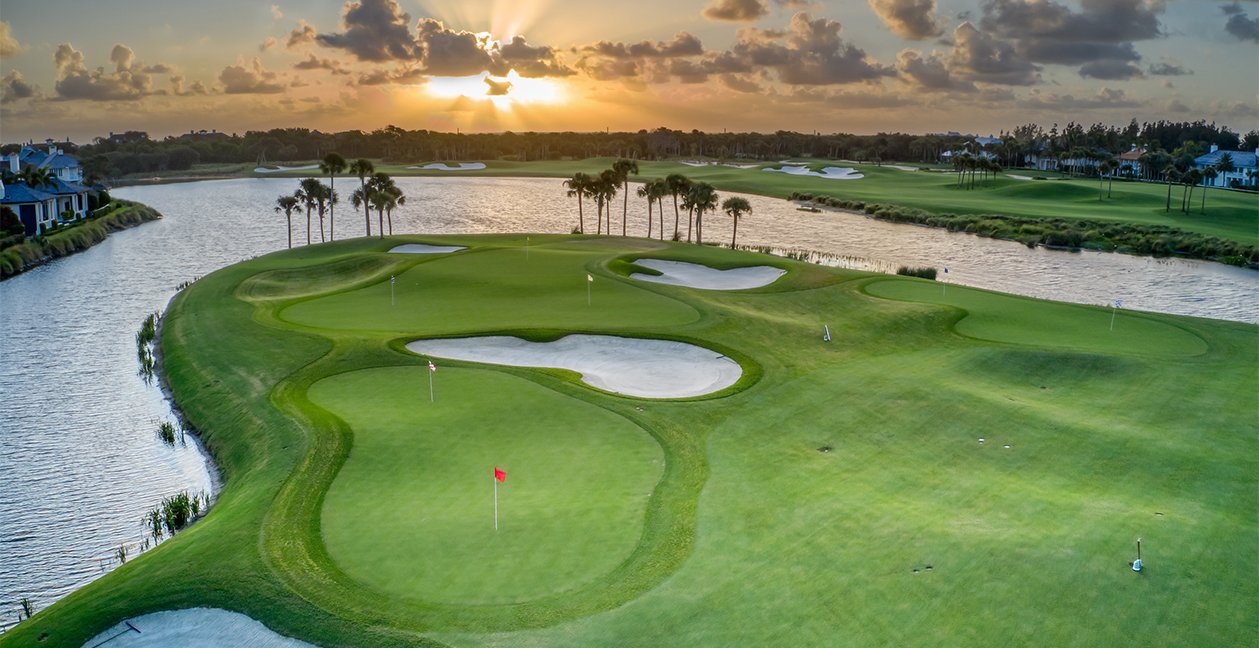At 80 years old, Robert Trent Jones Jr. (pictured below) is one of the most prolific golf course designers in modern times, even though his count of roughly 280 courses is a far cry from the more than 500 that his famous father, also a course designer, created. But having spent a lifetime on the links, Jones has seen the game evolve through urban growth, decline, sprawl and everything in between. Those societal changes have led golf course redesign to become an increasingly lucrative function for his firm, RTJ2. “We’ve built a lot of golf courses, so a small percentage of them need a second hard look over time,” he tells me.
 One of these recent projects was the course that he designed over 25 years ago at the private enclave of Windsor, near Vero Beach, Fla. “I’ve always loved Windsor. It’s probably my favorite Florida course that I’ve done,” he says. A multimillion-dollar renovation restored some original features—bunkering that had been removed, greens that had been displaced to make way for new homes—but the deeper changes were related to environmental impact: Decreasing mowing needs to reduce the carbon footprint, improving sustainability for wildlife and reducing water consumption for better drainage. “This is not unusual in Florida. Most of the coastal courses in Florida are going to have problems with drainage,” Trent Jones Jr. says, referring to the challenges of building at a low elevation in a state increasingly affected by sea-level rise and overdevelopment.
One of these recent projects was the course that he designed over 25 years ago at the private enclave of Windsor, near Vero Beach, Fla. “I’ve always loved Windsor. It’s probably my favorite Florida course that I’ve done,” he says. A multimillion-dollar renovation restored some original features—bunkering that had been removed, greens that had been displaced to make way for new homes—but the deeper changes were related to environmental impact: Decreasing mowing needs to reduce the carbon footprint, improving sustainability for wildlife and reducing water consumption for better drainage. “This is not unusual in Florida. Most of the coastal courses in Florida are going to have problems with drainage,” Trent Jones Jr. says, referring to the challenges of building at a low elevation in a state increasingly affected by sea-level rise and overdevelopment.

The idea that golf courses are detrimental to the environment is often cited as a reason that younger generations may not take to the sport. And declining participation rates since 2000 have led some to predict golf is on its way out—although a recent study by the National Golf Foundation found that 24.2 million people had played on a course in 2018, up slightly from 23.8 million the year before. Accusations of being “a rich man’s game” is another dark harbinger, even though 75 percent of golf courses in America are public.
Trent Jones Jr. disputes most of the criticism. “They’ve been saying that golf is about to die for 500 years,” he says. Here, he explains why golf actually benefits the environment and the community at large, and why rumors of the game’s impending death are greatly exaggerated.
Q: Is golf elitist?
A: The traditional idea of golf clubs is an English idea, not a Scottish idea, where the game originated. The Scottish idea was open to young, old, men, women—the entire community was invited to play—and they could walk their dog on the golf course if they were not playing.

What’s beneficial about a golf course to someone who isn’t a golfer?
A golf course is more than just a golf course—it’s a park. It has flora and fauna, but it’s also a place to collect water for the community. The community benefits from having a golf course like any other pond, even though they may not be playing it if it’s private. When the suburbs expanded exponentially in the ’50s and ’60s, the areas reserved for green space—for the oxygenation of the air and the other benefits—were golf courses. I also think golf courses can have multiple uses. At Chambers Bay and Spanish Bay in the 1980s, we introduced walking and bicycle trails through the golf course. Additionally, there’s a mutual benefit between the value of your home on a golf course as opposed to the value of your home without a golf course.
But many golf courses in the U.S. have shuttered due to neglect or lack of interest in maintenance. Isn’t that a concern?
That’s an interesting dilemma that goes on in the struggles to abandon golf courses, which is happening in Florida more than in any other state. It is a strange thing when a golf course that is not economical is let go. When the community stops taking care of it, it reverts into a field. What’s in that field? Rats, snakes, things that diminish the community’s desire to build around it.
Many active courses in Florida also are faced with flooding and other environmental challenges.
Most of Florida is flat. Therefore, the golf courses in places like Miami and Fort Lauderdale have drainage problems. Water runs downhill, and if you have a tide coming in that can back the water up that is trying to drain off the property, the area floods. But there’s a bigger issue. I’ve been coming to Florida all my adult life. To me, Florida used to look like one big golf course because there was so much land. Now it looks like one big pile of concrete, especially Fort Lauderdale. Every inch has been built upon it, including some golf courses that have been overtaken by development.
How does overdevelopment influence flooding?
When you add that much concrete or asphalt or hard surface, it gathers the rain and that further impacts the drainage problems. It adds more drainage problems to the already stressed infrastructure. Cities like Miami Beach are dealing with it with pumps to get the water out, but it’s very expensive. Some people are hiring folks from Holland to build dikes. That’s expensive. I’m not sure that Florida will look the same in a few years. Some of it may be gone.
Is golf itself on the way out?
First of all, golf is a sport, not a business. Yet businesspeople who go to business school like Harvard or Stanford end up writing for the Wall Street Journal that golf is about to die. If people want to treat it as a quarterly return kind of thing, then they’re in the wrong business.
When doomsayers point to golf club memberships being down as evidence…
That’s the wrong data point. The metric I watch is the number of golf balls sold. There may be fewer total number of memberships, but how many rounds are being played? [Editor’s Note: 434 million rounds of golf were played in 2018, a 4.8 percent year-over-year decline].
What will it take to attract younger players?
The game changes—young people want to play the game more quickly, they want to dress in cargo pants or whatever, they want to talk on their cell phones. That offends traditionalists. But the basic idea of a stick and a ball is fundamental, and every kid I know wants to hit something with a stick. The clubs that are smarter, like Windsor, have been transitioning to the needs of the next generation. So they remodel themselves and become more attractive with additional activities that are suitable for the whole family. That’s a good step. You respond to the times you’re in.
So golf is doing okay?
I think the game is healthy. The social aspect of the game may be changing. That’s a good thing. I’ve personally never been a fan of great big clubhouses.






